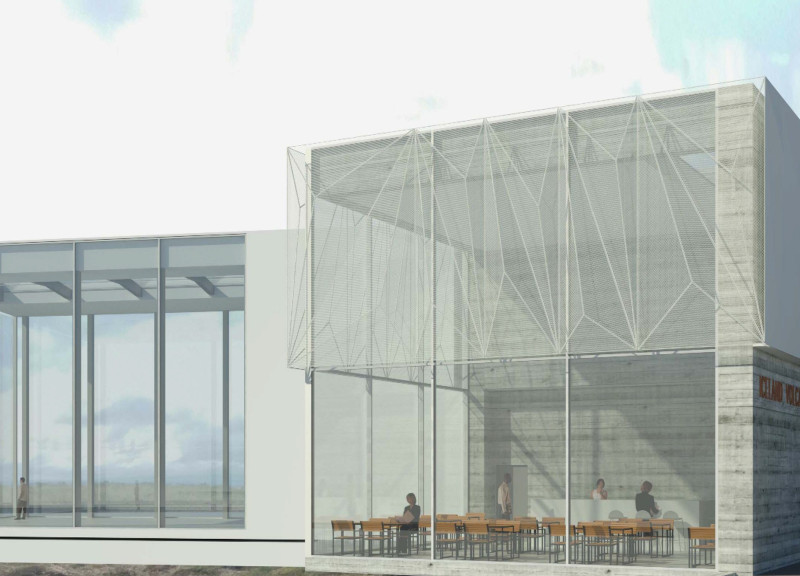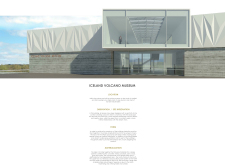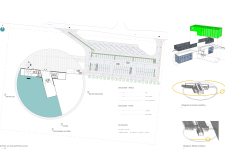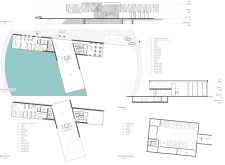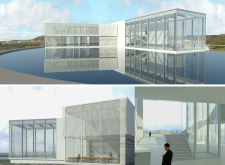5 key facts about this project
The design integrates seamlessly into the natural landscape, with a form that reflects the geological characteristics of its environment. Extensive use of glass allows for natural light to penetrate interior spaces, creating a connection between the inside and outside. The approach to spatial organization emphasizes visitor circulation, with large, open areas that facilitate movement and interaction. The architecture promotes a learning environment that is also visually tied to the volcanic terrain.
Unique Integration of Landscape and Structure
One of the key aspects of the Iceland Volcano Museum is its unique integration of structure and landscape. Unlike many typical museum designs, this project adopts a minimalist approach that resonates with the surrounding volcanic rock formations. The angular roofline and the horizontal orientation of the building echo the shapes found in the natural environment, reinforcing the theme of geological exploration. The transparency created by large glass panels ensures that visitors are constantly aware of their surroundings, making the landscape an integral part of the visitor experience.
Moreover, the strategic orientation of the building considers both sunlight and climate. This not only enhances energy efficiency through natural heating and lighting but also maximizes the visual experience throughout different times of the day and seasons. The careful choice of sustainable materials such as concrete, glass, and steel supports the structural needs while remaining contextual to the site’s geology.
Functional Spaces and User Engagement
Functional spaces within the museum include exhibition halls, interactive zones, and educational areas. The layout is designed to accommodate various functions, allowing for temporary exhibitions, workshops, and public lectures. Attention to user engagement is apparent; the design encourages visitors to move through the space fluidly, interacting with the exhibits and each other.
Additionally, multipurpose areas provide flexibility to adapt to different programming needs. This adaptability is essential for educational facilities, ensuring they remain relevant and responsive to the community’s needs. By integrating these spaces thoughtfully, the museum enables a dynamic educational experience centered around volcanic activity and its implications.
The Iceland Volcano Museum transcends typical architectural norms through its effective blend of functionality, sustainability, and integration with the natural environment. The project provides a model for how contemporary architecture can harmonize with its surroundings while serving educational purposes efficiently. To explore the architectural plans, sections, designs, and innovative architectural ideas involved in this project, interested readers should review the project presentation for a comprehensive understanding of its key elements.


